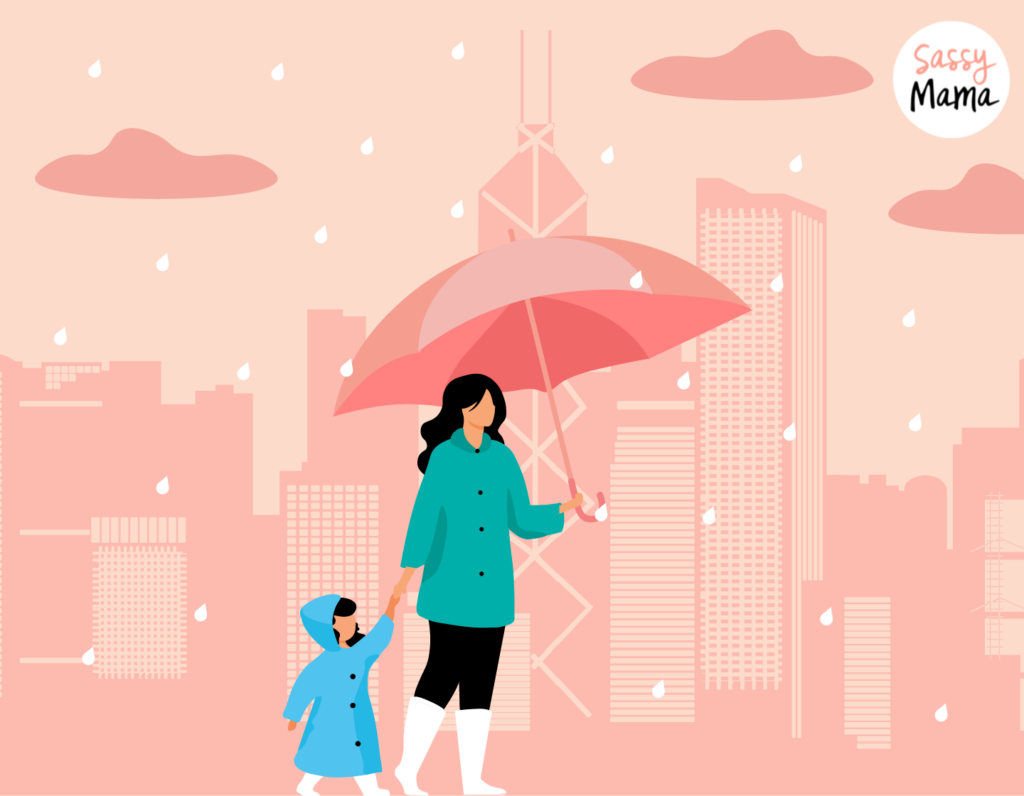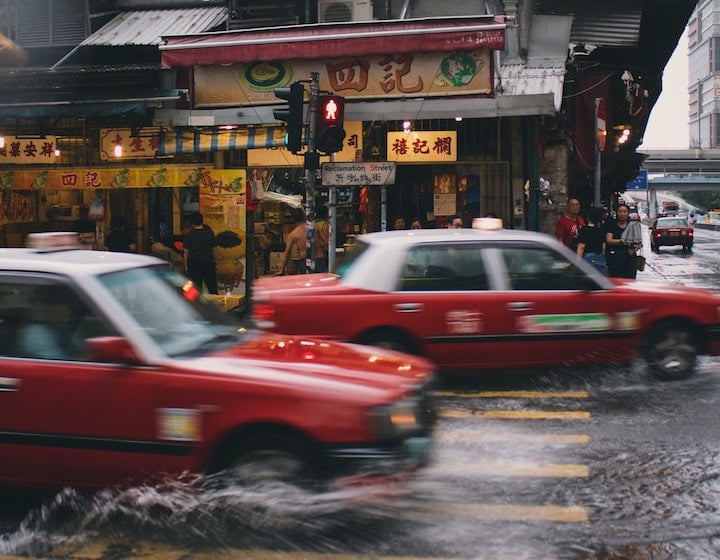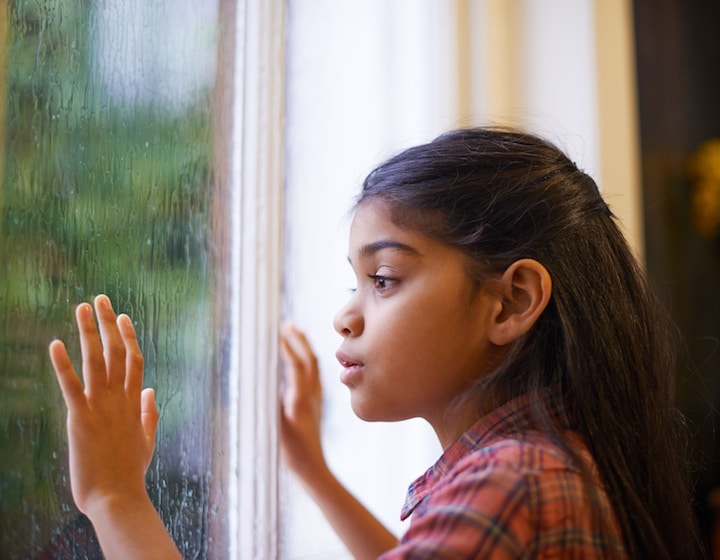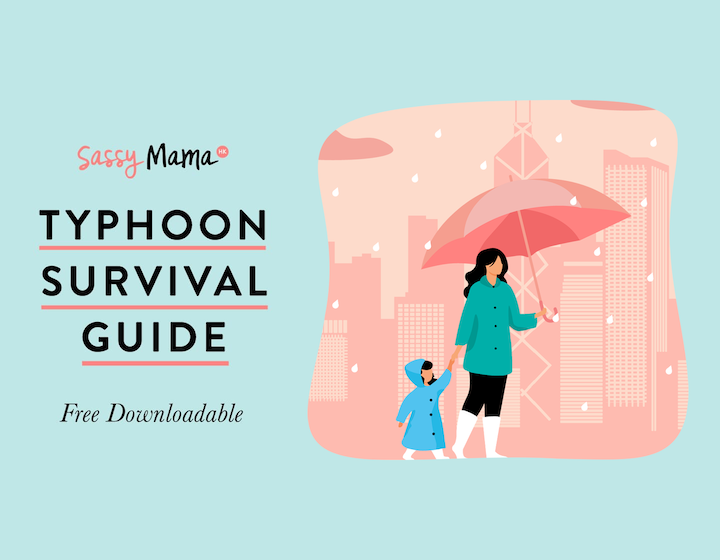
Do you know what to do when the T10 or T8 signal is raised? Here’s what you need to know for when the storms hit.
A Hong Kong typhoon day is all part of the experience of living in this great city, but it can still be a bit nerve-wracking if you’re new here, especially with kids at home. We’ve put together this handy guide to explain the Hong Kong Observatory’s warning signals, how you should prepare your home for a typhoon and importantly, where to get help and up-to-date information during a typhoon. Plus, there are some great kids’ activities to keep your little ones busy while you ride out the storm.
For a handy cheat sheet, save and print our downloadable with important phone numbers and what to do during the storm.
Read More: Indoor Activities In Hong Kong – Things To Do With Family On Rainy Days
What Is A Typhoon?
If you’ve lived in North America you might be used to hurricanes or in Australia where there are tropical cyclones. Typhoon is simply the name used in Asia. In Hong Kong, the typhoon season starts in May and lasts until November, but they are most likely to hit between July and September. The storm brings with it strong winds and heavy rain, which can cause flash flooding, landslides and damage to property. The good news — there is typically a few days’ warning that the storm is coming, so you’ll have time to prepare and Hong Kong is very well equipped to handle these things, particularly if you live in the city!
Read More: Best Podcasts For Kids – Children’s Stories, Science, History and more

Typhoon Warning Signals In Hong Kong
The Hong Kong Observatory’s MyObservatory app (on either Apple or Android) has a wealth of information, right at your fingertips. Day-to-day it is great for forecasts, but during a typhoon, this will be your go-to for tracking advice. The warnings start at T1, then T3, T8, T9 and T10 (T2, 4, 5, 6 and 7 all disappeared in the 1970s as it was making things too confusing!).
Unlike hurricanes and cyclones which are given categories based on the storm intensity, in Hong Kong, the typhoon warning signals are based on the storm’s proximity and effect on the territory.
T1 – Typhoon Warning Signal One
Don’t worry too much when you see a T1 alert — it just means there’s a typhoon within 800km of Hong Kong.
It might come towards Hong Kong or might miss it completely. In this mama’s experience, you can expect deceptively blue sunny skies as the storm sucks the weather towards it!
T3 – Typhoon Warning Signal Three
The storm is getting a little closer to Hong Kong and winds of 41 to 62km/hour will start to affect the city.
Your daily life may be affected as kindergartens will shut, most buildings will close their pools and outdoor facilities and boating activities will typically be cancelled (check the policy on those summer junk boat trips!).
T8 – Typhoon Warning Signal Eight
This is when things start to get serious and the city begins to shut down. Schools, offices and shops close, public transport and taxis stop and flights are suspended. There is normally a few hours’ warning that this will happen, so you have time to make transport arrangements, collect the kids from school, pick up any last-minute supplies and get to a safe location.
Weatherwise, you can expect gale-force winds between 63 and 117km/hour (with gusts up to 180km/hour!) and heavy rain.
T9 and 10 – Typhoon Warning Signals Nine And Ten
These are the most severe typhoons in Hong Kong and are rare (since 1946, the T10 signal has only been raised 16 times, and now the storms no longer bear names with gender biases!). However, Typhoon Hato hit the city in 2017 and Mangkhut in 2018 causing widespread damage and making international headlines so the memories are fresh for many locals.
You can expect hurricane-force winds of 118+km/hour with gusts of more than 220km/hour as the storm passes directly over Hong Kong. If you live in a high-rise apartment, you may feel your building sway (don’t worry, the buildings are designed for this!) and there is some risk of damage to windows, usually from flying debris. In more remote areas, you may lose power and have restricted road access after the storm has passed due to flooding and debris on the roads.
Read More: Parenting Tips – Websites and Apps to Navigate Your Child’s Screen Time

How To Prepare Your Home For A Typhoon In Hong Kong
The level of preparation you need to do before a typhoon will largely depend on where you live. There’s going to be a lot more to do for those living in village houses in the New Territories or Outlying Islands or those living on boats in Hong Kong, but even those in the city should do a check of their supplies.
- Bring outdoor furniture inside or tie it down securely — I can’t tell you the number of flying outdoor cushions and even furniture I saw flying through Mid-Levels during Typhoon Mangkhut!
- Boat owners should ensure vessels are appropriately moored and seek shelter on land.
- Stock up on long-life food and water. This is especially important if you are in a more remote part of Hong Kong where there is more risk of power and water outages or longer road closures after the storm has passed. In the city, you won’t have your usual fallback of home delivery services, so make sure you have at least 24 hours worth (but preferably enough to last 2 to 3 days) of food for the family (including your furry friends).
- Charge important electrical items like phones and laptops (as well as power banks as backup!). During Mangkhut, my apartment in Mid-Levels never lost power or internet. In fact, I was able to FaceTime family and watch TV for most of the day! But this may not be the case and you don’t want to waste your battery scrolling through social media.
- Prepare an emergency bag or box with flashlights (check the batteries!), a hard copy of emergency phone numbers (including family and friends) in case your phone dies as well as some first aid supplies, just in case.
Read More: The Best Indoor Playgrounds And Playrooms In Hong Kong
Riding Out The Storm
Once the T8 signal is raised and you and your family are safe at home, there’s not much to do but hang around and ride out the storm. Keeping the kids entertained will be your biggest task so settle in for some family movies, get out the board games or pull out the arts and crafts box. Listen to some podcasts or use the time to cull the clutter around the house.
The most important thing is DO NOT GO OUTSIDE! Even if it looks calm outside winds can come out of nowhere. Don’t risk it and stay put until the warning signals are lowered.
Read More: Our Top Book Picks For Hong Kong Kids Aged From 4 to 14+
Where To Get Information About Hong Kong Typhoons
No doubt during a strong typhoon your social media, news feeds and WhatsApp will be filled with all things typhoon-related. The key is finding reliable, accurate and up-to-date information. For weather notifications, look to the Hong Kong Observatory, either via its website, app or by calling the hotline. It will have information on typhoon tracking and intensity as well as rain, landslide and flood warnings in specific areas. News outlets are sure to be constantly updating coverage around the territory.
Read More: 10 Practical Tips For Mums Without Helpers In Hong Kong

Where To Get Help During A Typhoon In Hong Kong
Here is a handy list of Hong Kong emergency phone numbers:
Emergency Services – police, fire or ambulance: 999
Government Hotline – to report fallen trees, road conditions, landslides and building conditions: 1823
Hong Kong Observatory – for latest weather updates: 1878 200
Drainage Services – to report flooding: 2300 1110
Home Affairs Department – can assist with emergency accommodation and enquiries: 2835 2500
SPCA – for animals in danger: 2711 1000
Education Bureau – for school closure information: 2891 0088
St John Ambulance – for 24-hour ambulance service to private hospitals: 1878 000
Read More: Home Hacks – Six Ways To Make Cleaning Fun For Your Kids
Cleaning Up After A Typhoon In Hong Kong
You might be surprised at how quickly the city returns to normal after a typhoon. Roads are cleared of debris ASAP so that public transport can get up and running and businesses start to reopen as soon as it is safe to do so (often not long after the signals are lowered). You may notice repairs in the weeks following the storm, but in general daily life resumes before you know it!
Read More: Hong Kong House Cleaning Services
Editor’s Note: “Typhoons In Hong Kong – Your Ultimate Survival Guide” was most recently updated in July 2023 by Sassy Mama.
 View All
View All











 View All
View All





 View All
View All


 View All
View All
















